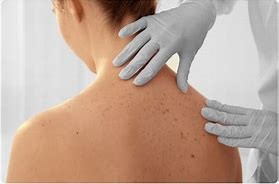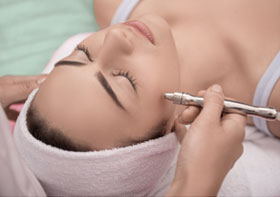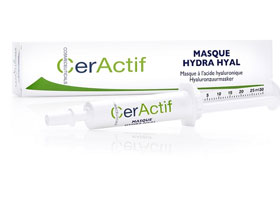The Mole Guide

As Britain is continuing to see temperatures soar into the nineties this summer, it brings many things along with it including long sunny walks, weekends spent at the beach & evenings spent in the pub garden! With this in mind it highlights the need for taking extra care and precautions while enjoying the sun. Unfortunately, skin cancer is the most common form of cancer in the UK & rates are continuing to rise. At least 100’000 new cases are diagnosed each year & the disease kills over 2’500 people every year in the UK.
There are two main types of skin cancer: the more common but less serious non-melanoma, and the more dangerous malignant melanoma.
It is important to check your moles for signs of skin cancer. Skin cancer can develop if skin is exposed to harmful ultraviolet (UV) rays. These can damage skin cells and, in the worst cases, cause mutation. These mutated cells may multiply as cancers and are at risk of developing into malignant melanoma – the deadliest form of skin cancer.
If you are unsure whether a mole is normal, take a look at our visual guide below to see if you need a check-up.
How to tell if a mole is dangerous
Most moles are harmless, but some can develop into melanoma. Anyone who has more than 100 moles are at the greatest risk on melanoma, so it’s a good idea to check your skin every few months for noticeable changes.
Moles are most commonly found on areas that often catch the sun, such as the face, arms, legs & back. However, many cancerous moles hide in unsuspecting areas, such as the scalp, behind the knees, between the toes & on the soles of feet.
Variations of Moles
There are many types of mole but here are a few of the most common;
• Brown, flat & round - junctional melanocytic naevi moles
• Raised, light brown & hairy - compound melanocytic naevi
• Raised, pale & hairy - dermal melanocytic naevi
Some of the rarer moles include;
• Dark Blue - Blue naevi
• Large, in a range of colours - Dysplastic naevi
• Surrounded in a white ring - Halo naevi
Those who have a larger number of moles should undergo a regular full body mole check.
Cancerous Moles
There are a few ways that you can tell if your mole needs checking. The first thing you should do is evaluate whether you are at a high risk of developing melanoma. The most common factors include;
• Over 100 moles on the body
• A family history of cancerous moles
• New moles appearing
• Changes in existing moles
• Fair skin
Regardless of skin tone it's a good idea to watch out for abnormal moles appearing. If one of these risks outlined above apply to you, you should book an appointment for a mole check or seek professional guidance.

A – Asymmetry. If you draw a line through the middle, the two sides should match. If they don’t match, you should get this looked at by a professional.
B – Border. Benign moles have smooth, even borders. Moles with an uneven or ragged edge should be checked out.
C – Colour. Most benign moles are often a single shade of brown. Uneven colours on an individual mole, such as brown, tan, black, red, white or blue could be a sign of melanoma.
D – Diameter. Melanomas are usually larger in diameter than benign moles, and are usually at least 6mm in diameter.
How to prevent cancerous moles
UV exposure is the main preventable cause of skin cancer, so here are a few tips on how to stay safe in the sun:
Clothing:Clothing should always be your first line of defence against damage from the sun, with sun screen being used in addition to clothes, including a wide brim hat, loose clothing & UV protective sunglasses.
Sunscreen:Use a sunscreen of SPF 30 (SPF stands for sun protection factor) and refers to the level of protection against UVB radiation, linked to skin cancer. Look for a four of five star UVA rating on the bottle which will help protect from UVA radiation, associated with skin ageing. You may also find that the UVA rating is represented by ‘UVA’ in a circle.
Get your timing right: Skin needs time to absorb sunscreen, so apply generously about 20-30 minutes before going out. Re apply frequently at least every two hours, as it can come off when sweating or through rubbing.
Stay in the shade:The sun tends to be strongest in the middle of the day, so find some shade typically between 11am and 3pm, especially if you are very fair skinned. Just 10 minutes of strong sunshine is all it takes to burn pale skin.
Regular mole checks: Arrange to have regular mole checks throughout the year, as you can’t do a full body check by yourself. Ensure to make additional appointments if you are concerned about any recent changes.
What happens during a mole check
Initially we offer a full consultation in which we take a history of the moles in question ;
UV exposure is the main preventable cause of skin cancer, so here are a few tips on how to stay safe in the sun:
How long have you had the mole?
Was the mole previously round in shape?
Has the colour of the mole changed?
Has the mole become raised?
Is the mole new?
Does the mole look different to your other moles?
Have you suffered any itching or bleeding?
We then use our Molemax skin scanner to photograph & scan in the mole, it captures 5 components of the skin across different layers. We show you the images taken in clinic & send this off to our Dermatologist for further assessment. If the mole is normal you will receive a letter in the post & if the dermatologist has any concerns you will receive a phone call.
If a Mole excision is required this can be arranged for you in clinic, mole excisions are usually carried out under a local anaesthetic, a small injection numbs the area & once removed we send it off to the lab so that the mole can be checked under a microscope.
When we receive your histology results back from the lab if there are signs of cancerous cells, then the dermatologist will discuss with you & decide how much more skin needs to be removed. The stitches will typically be removed between 7-14 days after your surgery & a follow up appointment will be carried out.
For more information on our mole checking options please call us on 01295 234 000 or email us at info@ampclinic.co.uk


